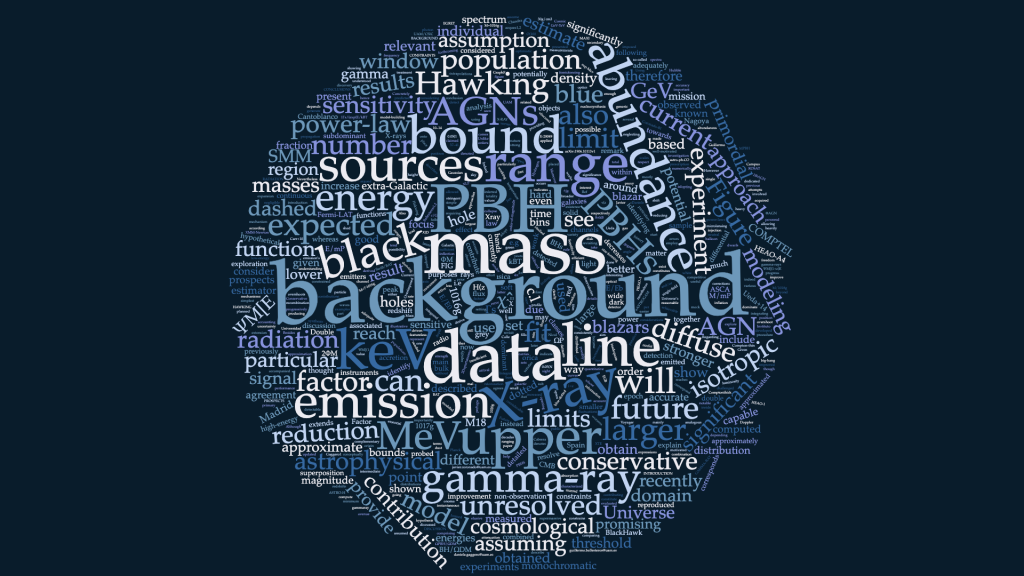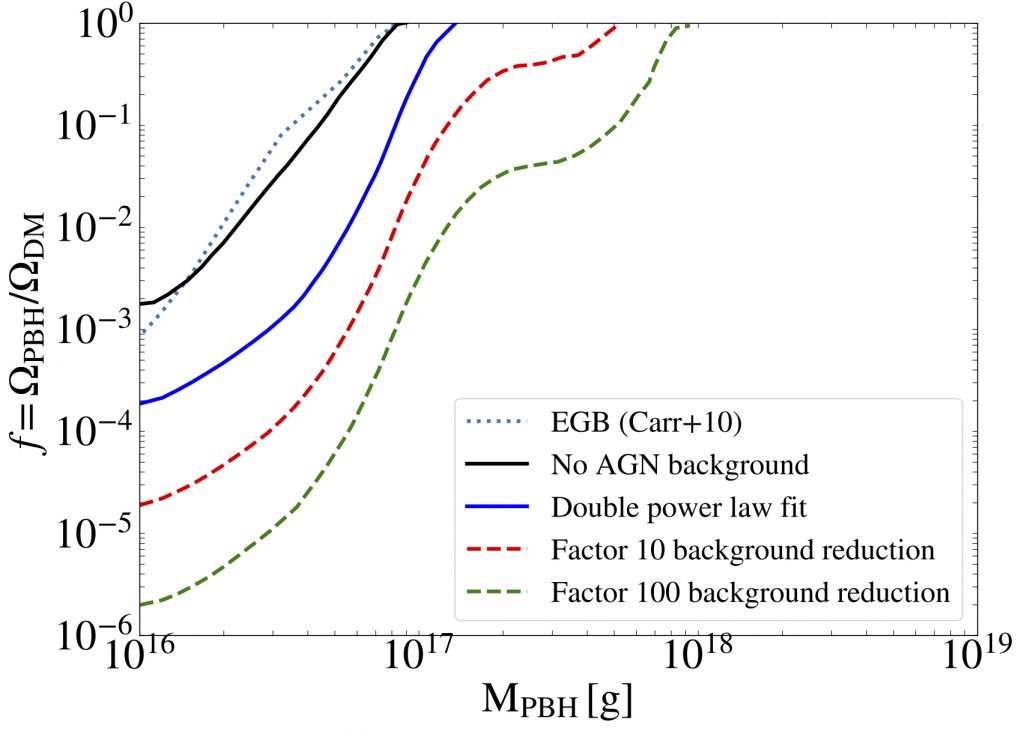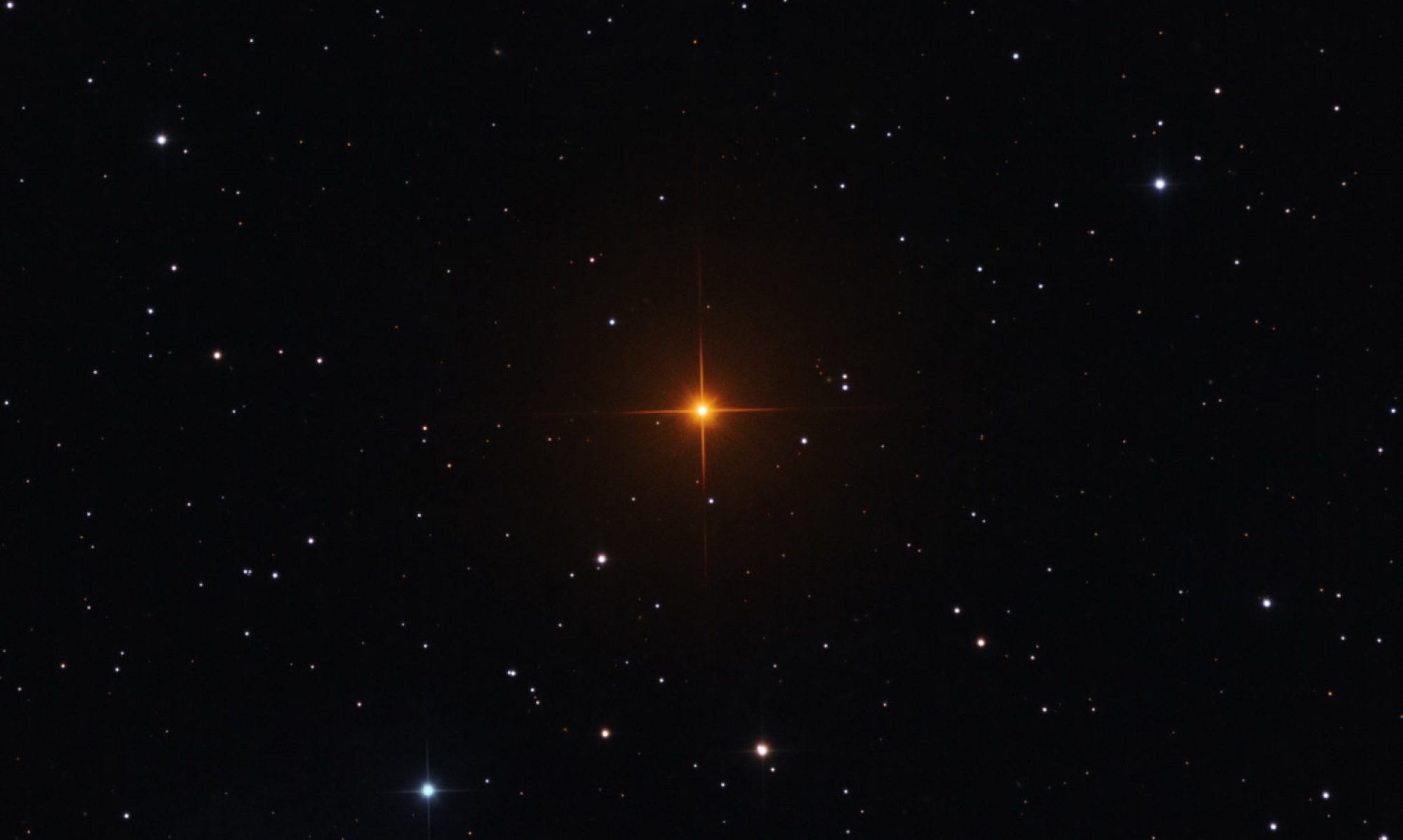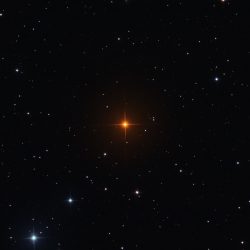
Written by J. Coronado-Blazquez
Summary of the paper with the same title submitted to PRD.
arXiv: 1906.10113
In the last few years, mainly due to LIGO’s detection of gravitational waves, an old idea has become quite popular once more: that the dark matter (DM) is not made of a new particle, but of black holes of primordial origin (PBHs), this is, produced during the inflationary phase of the Universe, shortly after the Big Bang. The range of masses of these objects are as low as 10^15g (much lighter than the Halley comet) up to thousands of times the Sun mass.
Stringent constraints have been put to f, quotient between the cosmological density of the PBHs versus the required DM one. If f=1, it means that all of the DM is in form of PBHs, while f=0.1 means only a 10% can be explained with them. Most of the ‘mass windows’ are now closed by different probes, but there is a very interesting one, ranging from 1e16 to 1e19g. No experiment has been able to constraint this mass window since the femtolensing limits placed in the region were found to be wrongly computed and no constraining at all.
A very popular and stringent constraint is the one achieved by the Hawking radiation: due to spontaneous particle creation near the event horizon, one member of the particle-antiparticle pair may fall into the PBH, leaving the other one without a companion to annihilate with. Therefore, the PBH seems to ‘emit’ particles, with approximately a blackbody spectrum at a given temperature inversely proportional to its mass. For a solar-mass PBH, this emission is completely negligible, but for very light PBHs, it can produce radiation as extreme as X- or gamma-rays.
This also makes the PBH to ‘evaporate’ in a given time. If this time is smaller than the age of the Universe (ca. 13.6 Gyr), they cannot be the DM, as this is expected to be stable, at least up to today. For this reason, PBHs below ~10^15g should have been evaporated now and cannot be the DM. But, if we lower the energy a bit, therefore increasing the mass, maybe they are stable emitters which can in fact be detected. As the emission we see will be the sum of all of these PBHs at cosmological scales, we should see an isotropic background.
This was done for the gamma-ray isotropic background, therefore for PBHs in the verge of the evaporation limits, but we extend these constraints to X-rays, being able to reach larger masses. Not only that, we realized that most of the isotropic emission is expected to be due to unresolved Active Galactic Nuclei (AGNs), such as BL-Lacertae or Quasars. Taking into account some models for the extrapolation of the luminosity function of these objects over cosmological scales and times, the space for the PBHs is greatly reduced, being able to constrain PBH DM up to large masses.
Finally, we perform some prospects for next-generation experiments such as E-Astrogam. As a future experiment will have a better sensitivity, it will resolve sources with a lower flux. The photons corresponding to these sources will no longer contribute to the isotropic background, lowering its intensity, and being easier to detect a PBH above it. We foresee two scenarios, a 90% and 99% background reduction, which again improve the constraints both in mass range and f.


